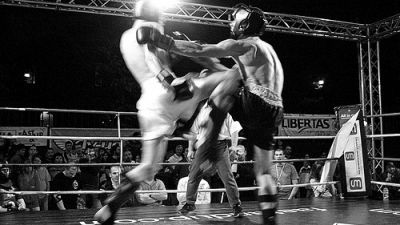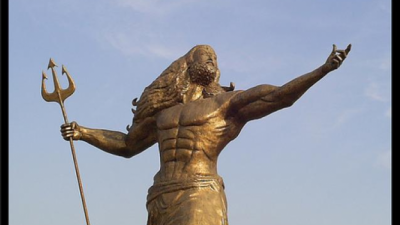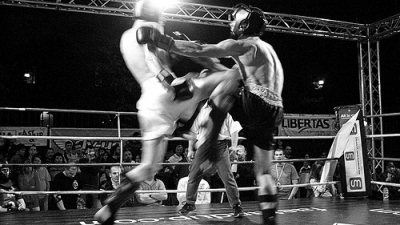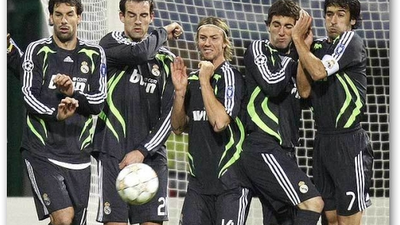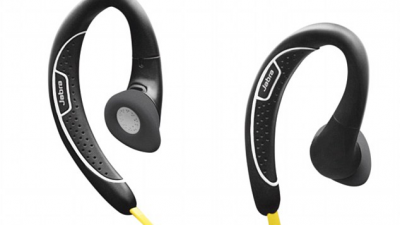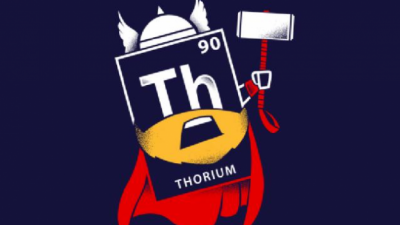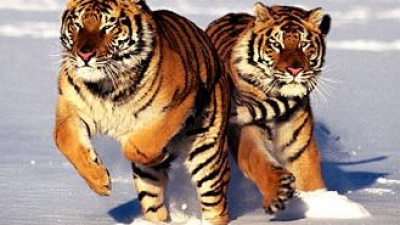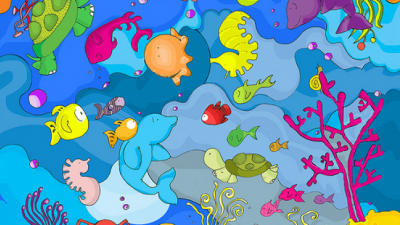The most interesting Basque sports
|
SPORT
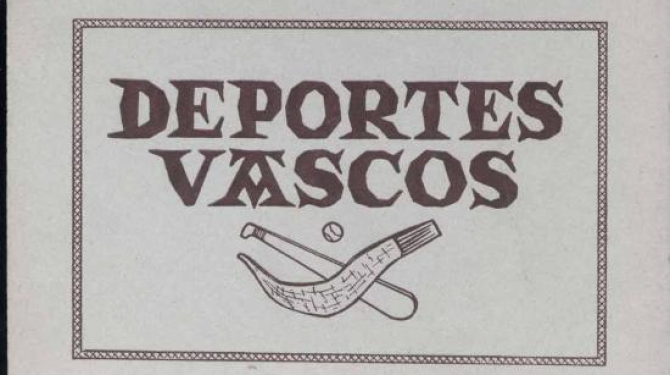
Source: listas.20minutos.es
TOP 17:
RACES WITH SACKS
Also called Smuggler Races (Zaku lasterketa): Races that are performed with a heavy bag loaded on the back. They emulate the work of smugglers and originate in the border area between Spain and France
TOP 16:
CAR LIFT
It consists in spinning a fixed stroke on the rudder as much as possible. The distance is calculated on the circumference. There are no universal rules, although in Donapaleu-Saint Palais, for example, the cart weighs 350 kilos.
TOP 15:
SWEEPERS
The augers (harri zulaketa in Basque) is a Basque rural sport that consists of making perforations in stones helped by a long steel bar. Index [hide] 1 History 2 Recovery 3 See also 4 External links History [edit] Since the end of the 19th century and during the first third of the 20th century, the borer trade was very common in mining operations, where it was necessary to drill the rock through augers (steel bars of about 2 meters in length and several kilos in weight) to introduce the explosives that were then exploded in controlled blasting and thus be able to extract the rocks that contained the iron ore. In those times, this work was carried out by brute force, without the use of any machine, so it was a trade of special hardness and, therefore, very appreciated, the drilling specialists perceiving higher salaries than the rest. Exhibition in 2006. This hard activity motivated these professionals to show others their strength and dexterity in the trade, causing great admiration among the audience. The Sunday Rest Act of 1904 favored the meetings of idlers in the squares of mining towns, which soon began to congregate around the spectacle that bore the borers. From the outset, bets emerged on who could make the hole deeper or in less time and soon championships of drills were organized to which many spectators attended. Betting money was also an important bonus for a few borers who stood out above the rest. In the early 1930s, before the Civil War, the championships of borers disappeared. With the arrival of machinery (hydraulic hammers and compressors), manual drilling ceased to be necessary in quarries and mines. Thus, with the end of the trade, this popular sport ended, until its recent recovery. Recovery This sport modality recovered in Ortuella, in the celebrations of the municipality of 1998, since before 1930 it enjoyed quite popularity in the celebrations of the towns of the mining region of Biscay. From this first test in 1998 several teams have emerged, mainly in the Left Bank, which have created a competition league. In 2012 the XIV edition of the Euskal Herria Borers League was played.
TOP 14:
YUNQUE RISE
The Anvil Lift or Lift (in Basque Ingude altxatzea, in French lever d'enclume) is a Basque rural sport. It is one of the so-called Iparralde Games, sports modalities of Basque rural sport, which have their origin and a greater tradition in the French Basque Country. Index [hide] 1 History 1.1 Elements of the test 1.2 Sport development 2 See also History [edit] The anvil is a tool commonly used in blacksmiths and forges. Blacksmiths used to carry the anvils on their backs when they moved from one place to another to do some work (for example, hurting a horse or a draft animal). In the same way that other tools of labor use such as the ax or the scythe will become a vehicle for the crossing of bets and challenges in which to measure the strength and resistance of the contestants; Anvils began to be used in the Basque Country as an element to measure the force between blacksmiths and farmers. Although formerly the challenges included the lifting of large and heavy anvils, that practice has disappeared and the current sport consists of lifting an anvil of relatively small dimensions and weight repetitively from a base to a preset height located above the athlete's head. This sports modality originated in the French Basque Country where it has more tradition. From there it extended southward towards the Spanish part of Euskal Herria, as well as other games and sports known collectively as Iparralde Games. Elements of the test [edit] The regulatory anvil used in competition tests weighs 18 kg. Its dimensions are 320 +/- 20 mm high and 600 +/- 20 mm long. The handles are smooth and have an approximate diameter of 40mm and a minimum length of 160mm. The handles are usually lined with rubber. In female tests the weight of the anvil is usually less, 10 kg. The structure used for the tests is usually in the form of "U". A vertical pole holds the visor, a rectangular metal top plate to which the anvil must be lifted. The visor can be adjusted to a different height and is usually placed 30 cm above the athlete's head. The dimensions of the visor are also regulated. It must be half a meter of minimum length and 400 mm (+ - 10 mm.) Wide. The base from which the anvil must be lifted is placed parallel to the visor. It is a rectangle of solid wood 1m long and 20 cm wide. It is usually 20 cm high from the ground. The upper part of the base is usually covered with a U-shaped steel plate 50 cm long, 20 cm wide and 1 cm thick. The distance from the pole to the tip of the base is 1m. Development of the sport In the championships the competition time is usually preset in 1 minute and 30 seconds. During that time the athlete must perform as many lifts as possible. The competitor who obtains the highest number of wins wins and in case of a tie, the competitor who acted in the first place is declared the winner. In Sola, tradition marks that the test be repeated in a shorter period of time to break the tie. The participant can grab the anvil both laterally and frontally. For a lift to be valid the athlete must lift the anvil from the base to the visor. Only if it hits both elements is the elevation counted as valid. The elevation is counted as valid at the time the top plate is struck. Usually the athlete usually has an assistant, who cannot touch the athlete during the test and who usually holds the platform. The use of resin or any other product that favors the grip on the hands is strictly prohibited. In some championships, more than 90 lifts have been made (1 per second). The record of Navarra is Xabier Sein with 93 lifts. Jose Lapazaran (Vizcayno) has the record with 100 hits in 1 minute and 30 seconds. In exhibitions the conditions may vary with respect to those of official competitions. The anvil lift technique requires keeping your back straight as far as possible and performing the force with your legs.
TOP 13:
MARMIT RACES
Variant of races with chingas that substitutes the weights for drums or kettles.
TOP 12:
COB COLLECTION
It involves collecting in a basket, in the shortest possible time, a certain number of ears, placed in rows at 1.25 meters away.
TOP 11:
SIGA SPORTS
It involves cutting the greatest number of kilos of grass, using scythes, in a meadow of a given area, for a previously established time. Athletes are called segalaris. Nor is this an exclusive sport of the Basque Country, as it is also practiced in the Alps region (Switzerland, Germany, Austria, Slovenia and Italy (South Tyrol) and in the Balkans (Bosnia-Herzegovina))
TOP 10:
LAUNCH OF FARDO
Bale throwing is a sport practiced in the Basque Country (especially in the French Basque Country), and in Scotland. A pitchfork is used to hook a sack full of straw above a horizontal bar higher than the pitcher's head. It is played on an area of 300 square meters. Launch of bale in the Basque Country. In Scotland, the usual weight is 16 pounds (about 7 kilos). There each competitor is given three opportunities to cleanly overcome the bar without being touched by the bale. After all the participants have made their throws, the bar is raised and all the competitors that have passed the first qualifier, try again with the new height, until all the athletes except one are eliminated.
TOP 9:
STONE DRAG
The Drag of stone is a very widespread rural sport in Cantabria, the Basque Country and Navarra (Spain and France) and areas of Castile and Leon, especially in the modality of dragging stone by oxen (in Basque idi-dema or idi proba) , although stone drag competitions are also held by men (gizon proba), by donkeys (asto-proba), by mules (command-proba) or by horses (zaldi-proba). Idi probak in Astrabudua (Erandio) in 2006. Index [hide] 1 Stone drag by oxen 1.1 Origin 1.2 The oxen 1.3 The stone 1.4 The square 1.5 The sweepers or akullaris 1.6 The test 1.7 The controversy 2 Other specialties 3 See also 4 References 5 External links Stone dragging by oxen [edit] Stone dragging by oxen is a sport in which a yoke of oxen guided by a yuntero (idi probalari) must drag through a square or enclosure conditioned for that purpose, a stone that can have a variable weight between 1500 Kg. and 4000 Kg. The yuntero who makes his oxen travel a greater distance in a predetermined time in advance wins. Origin [edit] Stone drag in the fair of San Blas de Abadiano (Vizcaya). Oxen have been used as draft animals in Basque villages for many years, because these animals were better suited to orography than mules or horses. The origin of these tests could be the work in the quarries, where the stones obtained in the blasting were worked rather in situ, to later be dragged by oxen to the place from where they were to be transported. As in so many other rural sports, the work became competition. Formerly the owners of the oxen faced betting large sums of money, land, cattle ... Nowadays the owners participate in exhibitions in popular festivals or in regional competitions in which a lot of money is still moving. The oxen The bulls are covered before the year of age. Normally, Basque landlords acquire them already unused for procreation. The weight of the ox used in drag tests can vary between 500 and 700 kilos, establishing in some cases an overload in the stone depending on the weight of the animal. Together with the work of the hamlet, the competition ox is made to walk the mountain daily. Occasionally a drag test is done so that the ox does not lose the habit. The stone Different types of stones in the town square of Astigarraga (Guipúzcoa). The shape of the stones is rectangular, slightly narrower on its anterior face, in which a hole for the chain hook has been carved. Its weight varies a lot, ranging from 1,500 to 4,000 kilos. For example, Tolosa's stone weighs 4,000 kilos, Gernika 4,500 and Mungia 4,700. In the municipal estate of Berriatua there is a 5,250 kilos, which has not been running since 1950. In the challenges the use of large stones is more frequent. In the contests smaller stone is chosen winning the show in eye-catching by taking the fastest route. It is usually customary for the stones to be exposed in public squares and be part of the street furniture. The square The stone is dragged by a flat formed by boulders, since the irregularity of the firm avoids that the oxen slide continuously. The length of the squares varies according to the localities, ranging between 22 and 28 meters. Formerly the tests were carried out in a street or town square of adequate characteristics. Today the challenges are giving way to competitions and championships. There are no longer two yuntas who opt for the awards, but several couples. Specially gifted places are then required for public accommodation, such as bullring, covered pediments, or specific enclosures for these tests (called probaleku). Stone drag test on April 25, 1944 in Elgueta (Guipúzcoa). Photo: Indalecio Ojanguren Los arreadores or akullaris [edit] The solitary ox, or the yunta, is helped and spurred by the arreer. Their number depends on the conditions set in the bet or, in contests, on what the regulations indicate. His methods have been significantly softened by the adoption of measures aimed at preventing animal abuse. In Basque they are known as akullaris, because of the rod or akullu they use. The test consists of making more places in a given time. The weight of the oxen is important for setting the conditions of the bet or contest. When a yoke exceeds the maximum allowable weight (set around 1,100 kilos), the stone receives an overload of one and a half kilograms per kilogram of overweight. The judge proceeds to the lottery draw. The start order is given with whistle. The boyero and herds try to dose the
TOP 8:
SHORT OF TRUNKS WITH SIERRA
It is about cutting logs, of certain measures, in the shortest possible time, using a log or saw. It is a sport also derived from the logging activity.
TOP 7:
SHORT OF TRUNKS
The cutting or cutting of logs is a traditional activity of logging, construction and household chores. In several forested areas of Europe, North America, Australia and New Zealand, traditional sports based on the tasks of lumberjacks have emerged. For example, in Castilla, Asturias and Cantabria there is the logging, or cutting of one-eyed in Asturian. Also in the Basque Country and Navarra the aizkolaritza, cutting of logs with ax, and the trontzalaritza or simply trontza, cutting of logs with saw. What all these modalities have in common is that it is competed by splitting tree trunk fragments, using an approved tool, which can be an ax, a log or trunk (saw for two people) or an electric saw. There are several federations, but they have not unified their regulations. This implies that in international competitions visiting athletes usually deal with regulations that they are not accustomed to. Cut with a trunk in Asturias. In addition to the tools used, there are many other differences between modalities: The type of wood used: beech predominates in the Basque Country, Navarra and Cantabria, eucalyptus in Asturias and Australia, pine in Castile, etc. In addition, in the Basque Country the bark is usually removed before the competition, while in Asturias they are cut with bark. The placement of the logs (horizontal or vertical): For ax cutting, the most common way in Basque aizkolaritza is to place the logs horizontally nailed to a support, raising the aizkolari over the trunk. In Castilla they are also placed horizontally, but without support. In cases where the trunk is kept vertical, the cutter can make the cut from the ground at a height less than two meters, or may have to make several successive cuts, to fix supports and climb several meters high to end up sectioning the top The duration of the tests, or the amount of logs to be cut. Comparatively, tests in Canada or Australia are considered speed, while those in Basque aizkolaris, which usually last more than 30 minutes (sometimes exceeding 60) are considered resistance. The individual character, in pairs or by teams, and the sex of the participants (in the cutting-off tests, the couples can be male, female or mixed). The objective: In most of the variants it is simply to section the trunk, once or several times. In Norway there is a variant in which a chair or wooden letters with electric saw is carved. Girls practicing cutting with tronza in Barakaldo, (Biscay). Index [hide] 1 Areas of Europe where it is practiced 2 See also 3 External links 3.1 In Spanish 3.2 America 3.3 Europe 3.4 Oceania 4 See also Areas of Europe where it is practiced [edit] Log cutting competition in Aviles (Asturias). Germany. Austria. Czech Republic. In Spain there are two important federations: one in Asturias and one in the Basque Country and Navarra. It is practiced less in Cantabria, Huesca, Madrid and Castilla y León especially in Palencia, Segovia, León and Soria. In France, in the Atlantic Pyrenees and the Alps region. Netherlands. United Kingdom. Norway. Switzerland.
TOP 6:
STONE LIFTING
Harrijasotzea or Harrijasoketa (voice composed of Basque harri, stone and jaso, to raise) is the name that receives the form of stone raising, variant of the strongman, typical of Basque rural sport and that is practiced in the territories traditionally called Euskal Herria and in which two players compete to lift a higher number of times stones of different shapes, dimensions and weights. One of the most famous harrijasotzaile champion is Iñaki Perurena who in 1999 reached the record of 1000 continuous lifts of a 100 kg stone in 5 hours, 4 minutes and 46 seconds. He was the first lifter to lift stones of 300 kg or more, reaching 320 kg in 1994. Mikel Saralegi, from Leiza as Perurena, holds the current record (329 kg), obtained in 2001.1 At the beginning of the 20th century, the regulation of the weights of the stones, usually made of dense granite, was carried out to distinguish four geometric shapes: cylindrical , cubic, spherical and shaped like a parallelepiped rectangle. The cylindrical shape is reserved for the smallest weights of 100, 112.5 and 125 kg, while the cubic and rectangular stone ranges between 125 and 212.5 kg. The spherical stone or ball is worked in weights equivalent to 112.5 and 125 kg. The dark colored stone or arri beltza is one of the most appreciated as manufacturing material, coming mainly from the quarries of Zumárraga and Lástur.
TOP 5:
SOKATIRA
Tug popular sport is. Different members of the two groups formed on both sides of the rope, each rope to pull it towards them. Sport in order to raise the other team is in place or a particular brand. There are 8 people in each group, with one of them leading the group. By weight they are different tests, taking into account the sum of the weight of each group of participants. 525, 560, 640 and 720 kilograms of categories, on the one hand, and weights. Olympic Games of [change | edit source] Olympic Games competed in this area from 1900 to 1920.
TOP 4:
PUNTA BASKET
The tip basket is a sport of Basque origin. The name comes from Basque zesta-punta, 'basket tip'. It is also called jai alai (cheerful party in Basque). This is a class of the Basque ball game that is practiced with a wicker basket. In the basket-tip, the ball is taken with the basket, impulse is taken and thrown towards the pediment. In this mode, the basket used has a weight that ranges between 200 and 600 g, with its length between 62 cm for the strikers and 68 cm for the defenders (if the curvature of the lines is taken into account, these dimensions range between 90 and 110 cm) and, the depth of the cavity of the basket of 15 cm. The basket is made from chestnut wood, woven from wicker, however synthetic materials are currently used. The shape of the curved, concave, elongated and narrow basket is apparently a modification of the old hat. It fits in the hand as a glove (tying it with a rope) and is provided with a bag that helps retain the ball. Sport of Basque origin, played in pediments, generally between 54 and 60 m. The main characteristic of the basket is to throw the ball with greater force and efficiency after picking it up and letting it slide to its end, from where it will leave farewell against the pediment, trying to do "so much" to get the highest number of points. The usual modality is the game in pairs, being the most outstanding countries France, Spain, Mexico, the Philippines and the United States. Index [hide] 1 Top basket in the Worlds of Basque Ball 1.1 Historic medal table 2 Top basket in the Olympic Games 2.1 Historic medal table 3 Bibliography Top basket in the Worlds of Basque Ball [edit] No. Year Headquarters Gold Silver Bronze Champions I 1952 San Sebastián Flag of Spain.svg Spain Flag of Spain.svg Spain Flag of Mexico.svg Mexico M. Balet - J. Balet II 1955 Montevideo Flag of Uruguay.svg Uruguay Flag of Mexico.svg Mexico Flag of Spain.svg Spain R. Montes - A. López III 1958 Biarritz Flag of France.svg France Flag of Mexico.svg Mexico Flag of Spain.svg Spain Azcue - José Hamui IV 1962 Pamplona Flag of Spain.svg Spain Flag of Mexico.svg Mexico Flag of Spain.svg Spain Adrián Zubikarai - José Hamui V 1966 Montevideo Flag of Uruguay.svg Uruguay Flag of Mexico.svg Mexico Flag of Spain.svg Spain Adrián Zubikarai - José Hamui VI 1970 San Sebastian Flag of Spain.svg Spain Flag of France.svg France Flag of Spain .svg Spain Flag of Mexico .svg Mexico Camy - Fourneau VII 1974 Montevideo Flag of Uruguay.svg Uruguay Flag of France.svg France Flag of Mexico.svg Mexico Flag of Spain.svg Spain J. Abeberry - J. Irazoqui VIII 1978 Biarritz Flag of France.svg France Flag of Spain.svg Spain Flag of Mexico.svg Mexico Flag of France.svg France Aperribay - Totorica IX 1982 Mexico Flag of Mexico.svg Mexico Flag of France.svg France Flag of the United States.svg United States Flag of Spain.svg Spain D. Michelena - J. Inchauspe X 1986 Vitoria Flag of Spain.svg Spain Flag of France.svg France Flag of Spain.svg Spain Flag of the United States.svg United States Etxeverria - Inchauspe XI 1990 Cuba Flag of Cuba.svg Cuba Flag of Spain.svg Spain Flag of France.svg France Flag of Mexico.svg Mexico A. Compañón - Mugartegui XII 1994 San Juan de Luz Flag of France.svg France Flag of Spain.svg Spain Flag of Mexico.svg Mexico Flag of France. svg France Lander - Osa XIII 1998 Mexico Flag of Mexico.svg Mexico Flag of France.svg France Flag of Mexico.svg Mexico Flag of Spain.svg Spain L. Garcia - E. Irastorza XIV 2002 Pamplona Flag of Spain.svg Spain Flag of France.svg France Flag of Spain.svg Spain Flag of Mexico.svg Mexico García - Inza XV 2006 Mexico Flag of Mexico.svg Mexico Flag of France.svg France Flag of Spain.svg Spain Flag of Mexico.svg Mexico García - Inza XVI 2010 Pau Flag of France.svg France Flag of France.svg France Flag of Mexico.svg Mexico Flag of Spain.svg Spain Tambourindeguy - Etcheto XVI 2014 Guadalajara Flag of Mexico.svg Mexico Flag of Spain.svg Spain Flag of France.svg France Flag of Mexico.svg Mexico Suso - Alberdi Historic Medalist [edit] # Country Gold Silver Bronze Total 1 Flag of France.svg France 8 2 2 12 2 Flag of Spain.svg Spain 5 8 4 17 3 Flag of Mexico.svg Mexico 4 6 5 15 4 Flag of the United States.svg United States 0 1 1 2 TOTAL 16 16 11 43 Peak basket at the Olympic Games [edit] No. Year Headquarters Gold Silver Bronze Champions I 190 0 Paris Flag of France.svg France Flag of Spain.svg Spain Flag of France.svg France José de Amézola and Francisco Villota II 1924 (exhibition sport) Paris Flag of France.svg France Flag of Spain.svg Spain Flag of France. svg France Sagrana, Garate, Santamaría III 1968 (exhibition sport) Mexico DF Flag of Mexico.svg Mexico Flag of Spain.svg Spain Flag of France.svg France F
TOP 3:
RATCHET
The ratchet (trinket in Basque, trinquet in French) is one of the homologated courts for the practice of Basque ball and one of the modalities of this sport. In Latin America, especially Argentina, it is usually also known under the name of a closed court, distinguishing it from the other types of pediment, which are usually called open courts. There is also a type of court called ratchet (Valencian ratchet) used in various specialties of the Valencian ball. This court, in addition to name, shares a common origin and certain similarities with the pawns of the Basque ball. Index [hide] 1 Characteristics of the court and the game 2 Specialties of the ratchet modality 3 History of the ratchet 3.1 Specialty of hand ball in ratchet 3.2 Specialties with tools 4 Bibliography Characteristics of the court and the game [edit] Ratchet in Elizondo ( Navarre). Wikimedia Commons hosts multimedia content about Ratchet. The ratchet has some common basic aspects with the remaining pediments: A front wall, called frontis, which is where players must return the ball on each play. This wall has a metal sheet 80 cm from its base that delimits the minimum height above which the ball must be returned to the front. A second sheet metal, 8.5 meters from the ground marks the upper limit of the return zone. The frontis usually has a height somewhat higher than this second sheet, approximately 10 meters. The width is also usually around 10 meters. A bounce wall located parallel to the front at a distance that delimits the length of the court. This wall is usually of a lower height, around 5 or 6 meters. A left wall that joins the frontis with the bounce wall, where it is valid for the ball to hit during the match. It is also a height below the front, around 5 or 6 meters. However, from there the ratchets have notable differences with respect to the remaining Basque ball courts: There is a right wall that joins the frontis and the bounce wall closing the court completely (hence the name that usually receive the closed court ratchets ), being delimited by four walls. It is lawful for the ball to hit the wall during the game, as is usually the case with the left wall. At present, the right walls are usually made of translucent materials to allow the follow-up of the matches from the counterfield. The front is joined with the right wall by a vertical inclined plane (a chamfer), called friar in Spain and drum or tambur in Argentina and also in Uruguay, which is also totally valid for the game and has the characteristic of modify the trajectory of the ball. The friar is considered as part of the frontis, that is, if a player returns the ball to the friar, it is considered a good return, although the ball then hits under the plate or does not reach the front. Along the left wall, from the front to the bounce wall extends a sloping roof that is totally valid for the game. The boat on the roof is not considered a valid boat, that is, the ball can be returned even if it is bouncing or rolling on the roof. Under the roof there is usually a gallery where spectators are accommodated. Under the roof, in the vertical plane, there is a net or grid of metal or wood, called sare or xare. If one of the players manages to throw the ball into the net after he has bounced on the court, he gets so much. Along the bounce wall, between the left and right wall, there is also usually another roof with an inclined plane. The box or xilo. It is a hole located on the right side of the frontis 40 centimeters above the lower sheet of the front. In its external part it is wider than in its interior, making the direction of exit of the ball that enters inside unpredictable. Traditionally of similar length to the short pediment (around 30m), the homologated courts for international competitions have a slightly shorter length (28.50 m). The existence of the roof and the shorter length of the court usually make the ball reach more rebound than in the same specialties played in short pediment. In the ratchets they usually practice the same specialties as in the short pediment, that is, they usually play with the same tools, but the existence of those elements of the court: roof, right wall, net, drum, box, etc. they participate as indirect elements in the game, they make the same specialties have a different conception of the game in the ratchet than in the other courts. Specialties of the ratchet mode [edit] In t
TOP 2:
TRAINER RATINGS
A trawler is, originally, a vessel typical of the Spanish Cantabrian coast, driven by rowing and sometimes sailing, formerly dedicated to fishing, but today, with lightening modifications, to the sport of rowing regattas. With fine lines, raised bow and round stern, it resisted the waves of the Cantabrian Sea very well. Its name derives from the word "traine" or "traíña", which is a very dense mesh network used for catches, especially anchovy and sardine. Index [hide] 1 Characteristics 2 Featured races 3 References 4 See also 5 External links Features [edit] The trawlers are a clear example of how the use of a working instrument disappears over time, leading to competition and to the game, nowadays becoming a fixed-row rowing sports boat with strict regulations regarding weight, dimensions, etc. The manufacturing process takes at least a month or a month and a half. A scale drawing of the boat is made, based on standard measures of 12 m in length, 95 cm bow, 75 cm stern and 60.5 cm strut. The total weight of the boat including tolete, bench and tolerant has to be 200 kg. The material used for years was the wood in its entirety, of cedar and beech. Currently, the material used is carbon fiber and kevlar to make boats with aeronautical techniques, similar to those applied in the construction of the fuselage of the Airbus 380.1 aircraft. The boat is one piece and has more resistance than before. The life of a boat in an important club is usually two or three years. A trawler, in the year 2008, had an approximate price of 25,000 euros.1 The oars, like the boats, were made of wood although the same as the trawler they have evolved to the carbon fiber. At present, a trawler crew is composed of 13 rowers plus a skipper. The rowers are distributed in six rows of 2 rowers plus the bow rower, which goes only on its previous bench. On each bench, except in the bow, a rower paddles by port and another by starboard, making him "on his back", that is, looking aft. The skipper, who usually stands in the stern looking forward, is the one who runs the boat with the helm. Only representatives of the entire Cantabrian north coast participate in regatta regattas: Galicia, Principality of Asturias, Cantabria, Basque Country and French Basque Country; and apart from the corresponding cash prize of each regatta, the winning club is traditionally awarded a flag of the locality that hosts the competition or its sponsor. Featured races [edit] Currently the calendar consists of: "Descents" (usually a river or a river), at the beginning of the season. Beginning in June, the races that are not included in the leagues begin. The regattas of the leagues (San Miguel-ACT League, ARC League and LNT League) in July and August. Regional championships and the Spain Traineras Championship. Among them, the three oldest of the calendar stand out: Santander Flag, Nervión Grand Prix and La Concha Flag. These three races, due to their location (the three provincial capitals, Santander, Bilbao and San Sebastián), have historically been the best and most famous. In Asturias and Galicia the most important regattas are the Prince of Asturias Flag in Castropol, and the Conde de Fenosa Flag and the Teresa Herrera Flag in La Coruña. Previously, in the 36 years between 1941 and 1976, the Cup of HE The Generalissimo was played in La Coruña.
TOP 1:
VASCA BALL
The Basque ball (in Basque: pilot), is a universal sport that in the Basque Country has been practiced in a traditional way, having been able to save the contribution of other civilizations. The greatest merit of the Basques has been the adaptation of the game to their own characteristics, providing numerous modifications, creating new modalities, facilities and game materials.1 The first documents referring to the game are some 13th-century French texts that place its origin in France, mentioning two variants of the game: courte paume or short palm, practiced by the nobility and clergy, and longue paume or long palm, practiced by the population in open spaces. [citation needed] This sport is played mainly in Spain and France, although there are also Basque ball federations in Argentina, Bolivia, Brazil, Canada, Chile, Costa Rica, Cuba, Ecuador, El Salvador, the United States, the Philippines, Greece, Guatemala, Holland, India, Italy, Mexico, Paraguay , Peru, Puerto Rico, Dominican Republic, Sweden, Uruguay and Venezuela.2 Due to the origin of the game, there are many good players who are Basque. The athlete who practices this sport is called "pelotari." 3 Generally requires the participation of at least two players or two teams that in general strikes a ball in turn against a wall called "frontis", until getting a bit . The court in which it is played is called pediment, there is a variant called ratchet, which is a closed court with a side roof. The International Federation of Basque Ball (FIPV) recognizes 4 modalities with a total of 14 official specialties. Women participate in two of them.4 The type of court where the game is played is considered modality, and what is practiced in this field.4 The official modalities and specialties are: In a ratchet, a paddle is played with a rubber ball (men and women), to paddle with leather ball, by hand (individual and in pairs) and to xare (or share). In a 36-meter pediment (also called a short pediment or left wall), a short shovel is played, a paddle with a leather and hand ball (individual and in pairs) and a solid rubber paddle In a 30 meter pediment, frontenis (men and women) are played ) and paddle with rubber ball. In the 54-meter pediment (also called the long pediment or Jai Alai), a tip basket is played. In addition to the modalities and specialties recognized by the International Federation, there are other modalities and specialties that are practiced locally. Index [hide] 1 History 2 Basque ball modalities 2.1 30-meter short pediment 2.2 36-meter short pediment 2.3 54-meter long pediment or Jai Alai 2.4 Ratchet 3 Basque ball specialties 3.1 Hand ball 3.2 Solid rubber paddle 3.3 Paddle ball 3.4 Basket Tip 3.5 Frontenis 3.6 Sare 3.7 Others 4 Scheme of a pediment 5 World Championships of the Basque Ball 5.1 Medal standings 6 History in the Olympic Games 7 Featured balls 8 Broadcasting of games on television 9 Ball in television fiction 10 Ball in cinema 10.1 Fiction films 10.2 Documentaries 10.3 Basque ball in literature 11 See also 12 References 13 External links History [edit] Throughout the history of the world numerous civilizations have practiced different ball games. They used to compete individually, developing the game in meadows conveniently delimited; the game allowed distraction and personal challenge. The ball is therefore a universal game; the most codified forms of the game were in South America, the Middle East or Western Europe. The Jeu de Paume, the game of the drum, that of the sieve, are living manifestations of the old ball games and the Basque ball and tennis are direct legacies of those games.1 The advance of the Roman Empire brought the game called French territory battery. Its subsequent evolution would derive in the Jeu de Paume. This game, which was practiced in the meadows and in the squares of the villages, kept its name of paume (palm) despite the progressive use of various striking implements. The bourgeois and aristocrats used gloves and rackets.1 In the twelfth century, gradually, documents that support the expansion of the ball game increase. In the Middle Ages it is evident that the palace, the nobility and the kings had their so-called ratchets. France is the pioneer in the game of the ball, regarding the possible similarity with the current times, including two modalities: "the longue paume" and the "courte paume" .1 In the twelfth and fourteenth centuries the game of "paume" It is widespread throughout France. A. de Luze, a student of the ballistic evolution, in 1933 counts the existence of more than 300 "tripots" or ball games during the time periods that go from

